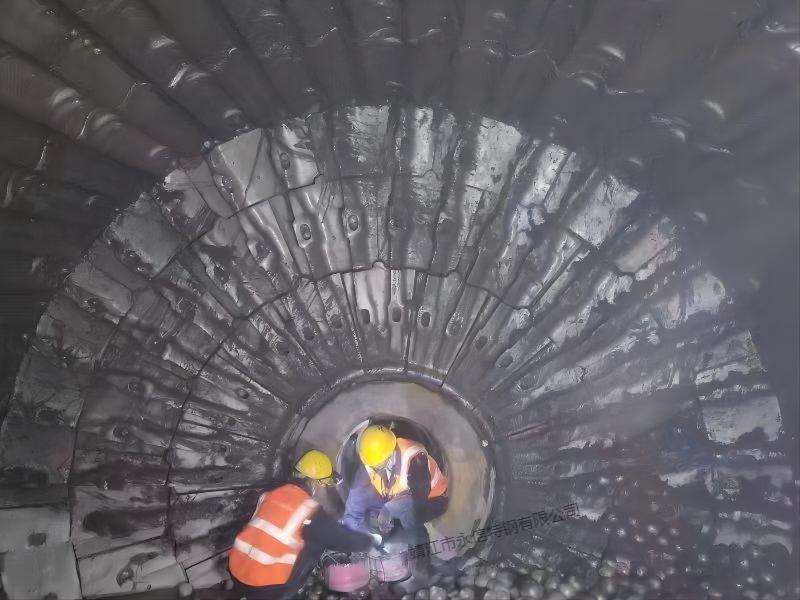Ball Mill Lining: Importance and Maintenance
If you’re in the mining Jjyxbml industry, you’re probably familiar with ball mills. These machines are used to grind down materials into smaller particles, and they’re an essential part of many mining and mineral processing operations. But did you know that the lining of a ball mill plays a critical role in its performance? In fact, the right lining can improve grinding efficiency, reduce energy consumption, and extend the life of the mill.

There are several different types of ball mill lining available, each with its own advantages and disadvantages. Some of the most common materials used for ball mill lining include rubber, steel, and ceramic. Rubber lining is particularly popular for its ability to reduce noise and vibration, while steel lining is often preferred for its durability and strength. Ceramic lining, on the other hand, is known for its high wear resistance and is often used in applications where the material being ground is particularly abrasive.
Overview of Ball Mill Lining

If you’re in the business of manufacturing or processing materials, you’ve probably heard of ball mills. These machines are essential for grinding materials down to a fine powder, and they’re used in a wide range of industries, from mining and construction to pharmaceuticals and food processing.
But what you might not know is that the lining of a ball mill is just as important as the grinding media inside it. In fact, the design of ball mill linings plays a crucial role in optimizing the efficiency and performance of the milling process.
Purpose and Function
The primary purpose of a ball mill lining is to protect the mill’s steel shell from wear and tear. But it’s not just a protective layer – the lining also plays a pivotal role in enhancing the efficiency, extending the lifespan, and influencing the overall performance of the ball mill.
One of the key functions of the lining is to prevent excessive wear and damage to the mill. This is achieved by using materials that are resistant to abrasion and impact, such as rubber, steel, or ceramic.
Another important function of the lining is to control the movement of the grinding media inside the mill. This is done by designing the lining with different shapes and profiles, which can help to improve the grinding efficiency and reduce energy consumption.
Materials Used
The materials used for ball mill lining are typically chosen based on their resistance to abrasion and impact, as well as their ability to withstand high temperatures and corrosive environments.
Rubber is a popular choice for ball mill lining because it is highly resistant to wear and tear, and it can be easily molded to fit the contours of the mill’s shell. Steel and ceramic linings are also commonly used, depending on the specific requirements of the milling process.
In addition to the lining material itself, there are also different types of liners that can be used, such as wave liners, double wave liners, and magnetic liners. Each of these types has its own unique properties and advantages, and the choice of liner will depend on the specific needs of the milling process.
Overall, the design of ball mill lining is an important factor in optimizing the efficiency and performance of the milling process. By choosing the right materials and design, you can help to extend the lifespan of your equipment, reduce maintenance costs, and improve the quality of your products.
Installation of Ball Mill Lining

Preparation and Safety
Before starting with the installation of the ball mill lining, it is important to ensure that the area is clean and free of any debris or obstacles. This will help prevent accidents and ensure that the installation process goes smoothly. You should also ensure that you have all the necessary tools and equipment required for the job.
It is important to follow all safety guidelines and precautions during the installation process. This includes wearing appropriate personal protective equipment (PPE), such as gloves, safety glasses, and a dust mask. You should also ensure that the mill is shut down and all power is disconnected before starting the installation process.
Installation Procedure
The installation of the ball mill lining involves several steps that should be followed in the correct order. Here is a step-by-step guide to help make the process easier:
- Prepare the Mill: Before removing the old liners, ensure that the mill is shut down and all power is disconnected. This will ensure that the process is safe and that there is no risk of injury.
- Remove the Old Liners: Using a pry bar or other appropriate tool, carefully remove the old liners from the mill. Be sure to remove all screws and bolts that are holding the liners in place.
- Clean the Mill: For efficient and proper removal, you must first clean the mill. You may have pulp accumulated on the ball mill that you need to clean. Furthermore, remove the rubber pad, clean the wall and remove the dust by descaling the cylinder. Once the barrel is fixed, ensure good ventilation so that the replacement process can start.
- Install the New Liners: Once the mill is clean, you can begin installing the new liners. Start by placing the first liner in place and securing it with screws or bolts. Repeat this process for each of the remaining liners, ensuring that they are properly aligned and secured in place.
- Test and Adjust: Once all of the new liners are installed, it is important to test the mill and make any necessary adjustments. This will help ensure that the mill is operating properly and that the new liners are working as intended.
By following these steps and taking the necessary precautions, you can ensure that the installation of the ball mill lining is safe and successful.


